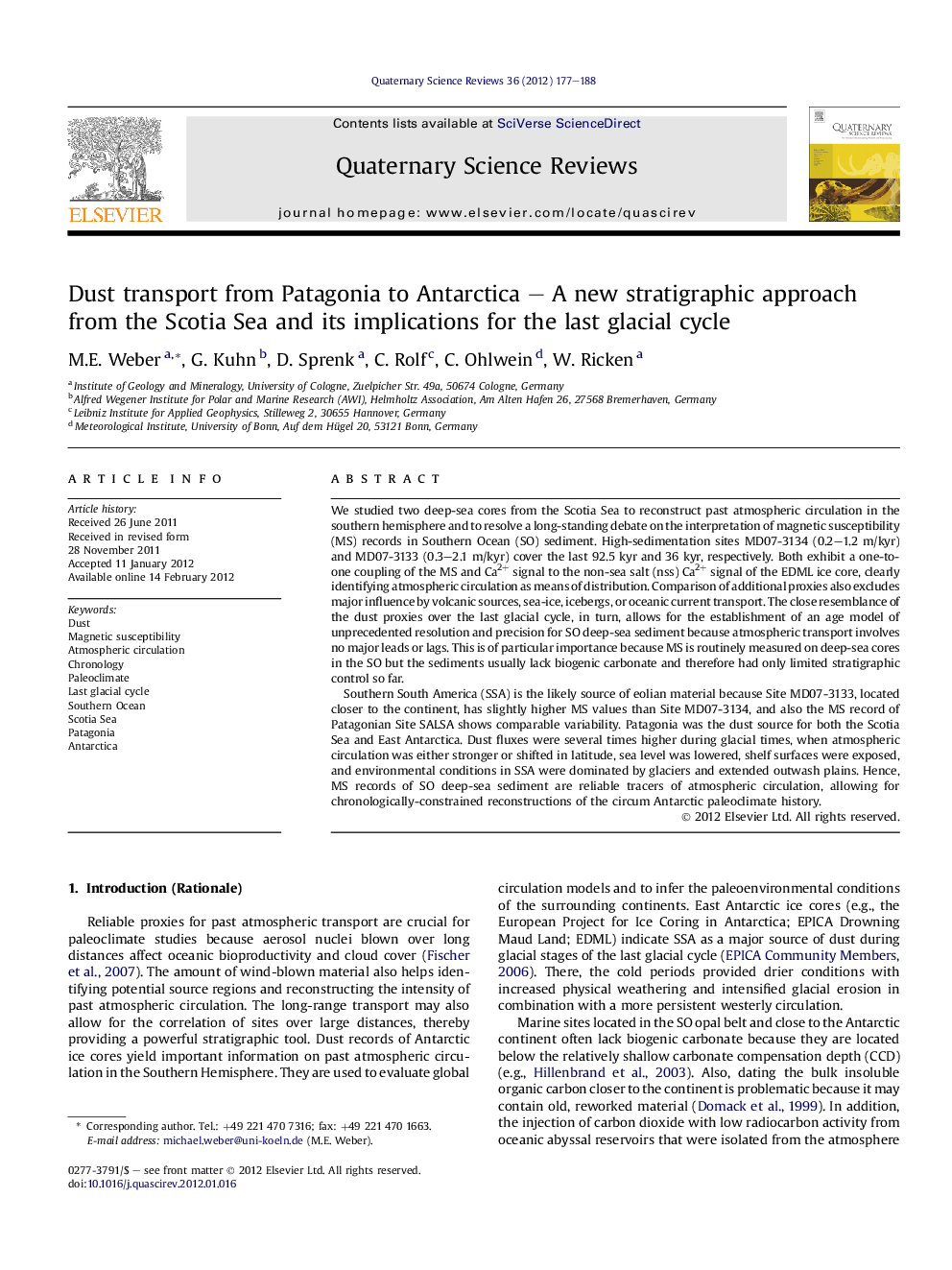| Article ID | Journal | Published Year | Pages | File Type |
|---|---|---|---|---|
| 4737481 | Quaternary Science Reviews | 2012 | 12 Pages |
We studied two deep-sea cores from the Scotia Sea to reconstruct past atmospheric circulation in the southern hemisphere and to resolve a long-standing debate on the interpretation of magnetic susceptibility (MS) records in Southern Ocean (SO) sediment. High-sedimentation sites MD07-3134 (0.2–1.2 m/kyr) and MD07-3133 (0.3–2.1 m/kyr) cover the last 92.5 kyr and 36 kyr, respectively. Both exhibit a one-to-one coupling of the MS and Ca2+ signal to the non-sea salt (nss) Ca2+ signal of the EDML ice core, clearly identifying atmospheric circulation as means of distribution. Comparison of additional proxies also excludes major influence by volcanic sources, sea-ice, icebergs, or oceanic current transport. The close resemblance of the dust proxies over the last glacial cycle, in turn, allows for the establishment of an age model of unprecedented resolution and precision for SO deep-sea sediment because atmospheric transport involves no major leads or lags. This is of particular importance because MS is routinely measured on deep-sea cores in the SO but the sediments usually lack biogenic carbonate and therefore had only limited stratigraphic control so far.Southern South America (SSA) is the likely source of eolian material because Site MD07-3133, located closer to the continent, has slightly higher MS values than Site MD07-3134, and also the MS record of Patagonian Site SALSA shows comparable variability. Patagonia was the dust source for both the Scotia Sea and East Antarctica. Dust fluxes were several times higher during glacial times, when atmospheric circulation was either stronger or shifted in latitude, sea level was lowered, shelf surfaces were exposed, and environmental conditions in SSA were dominated by glaciers and extended outwash plains. Hence, MS records of SO deep-sea sediment are reliable tracers of atmospheric circulation, allowing for chronologically-constrained reconstructions of the circum Antarctic paleoclimate history.
